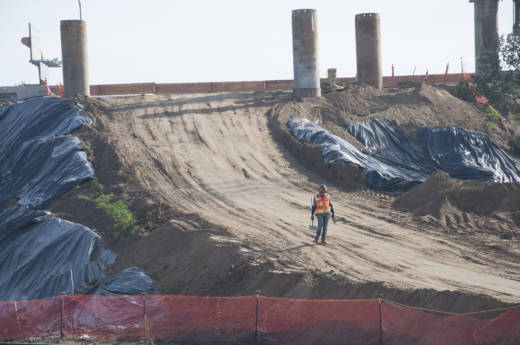The bullet-train project was created in 2008 by Proposition 1A, a $10 billion bond meant to fund initial planning, engineering and construction of an 800-mile high-speed rail network connecting San Diego and Los Angeles to the Bay Area and Sacramento.
The vision was for a project that would attract substantial private investment. But that private interest was slow to materialize, and meantime, the project has been beset by numerous court challenges and resistance from communities and landowners who would be impacted by the bullet train's construction and operations.
Two major Bay Area transportation projects are intimately tied to the high-speed rail project.
Caltrain, the commuter rail line from Santa Clara County to San Francisco, is using state high-speed rail money along with federal grants and other funds for a $2 billion project to electrify and modernize its service. Planning for high-speed rail has assumed that future bullet trains would use the Caltrain route into San Francisco.
Caltrain noted in a statement after Newsom's address that the state is providing nearly $900 million to the modernization project -- about 80 percent of that coming from the California High-Speed Rail Authority. The project, which includes buying new cars, is scheduled to be completed in 2022.
The Caltrain and bullet train routes have been envisioned as terminating at the Transbay Transit Center in downtown San Francisco.
Planning is underway for a tunnel that would allow the trains to run under Mission Bay and South of Market to the center, where preliminary construction for underground rail platforms has already taken place. Current estimates put the overall cost of the extension at $6 billion, with completion in 2027.
Randy Rentschler, director of legislation and public affairs for the Metropolitan Transportation Commission, said Newsom's announcement was a surprise. He said that a statewide bullet-train network still made sense and will come together "in incremental segments" -- much like the nation's interstate highway system did.
"High-speed rail is very important to the Bay Area," Rentschler said. "For high-speed rail to work, unlike airports, it's got to connect a transit-rich community like the Bay Area with a transit-rich community like Los Angeles. That's the end game."
Clarification: This story originally stated that Gov. Gavin Newsom had "abandoned" and "pulled the plug on" a high-speed rail connection between San Francisco and Los Angeles. The original copy has been edited to reflect the governor's further remarks that such a line might be completed in the future.
This story includes reporting from The Associated Press.

